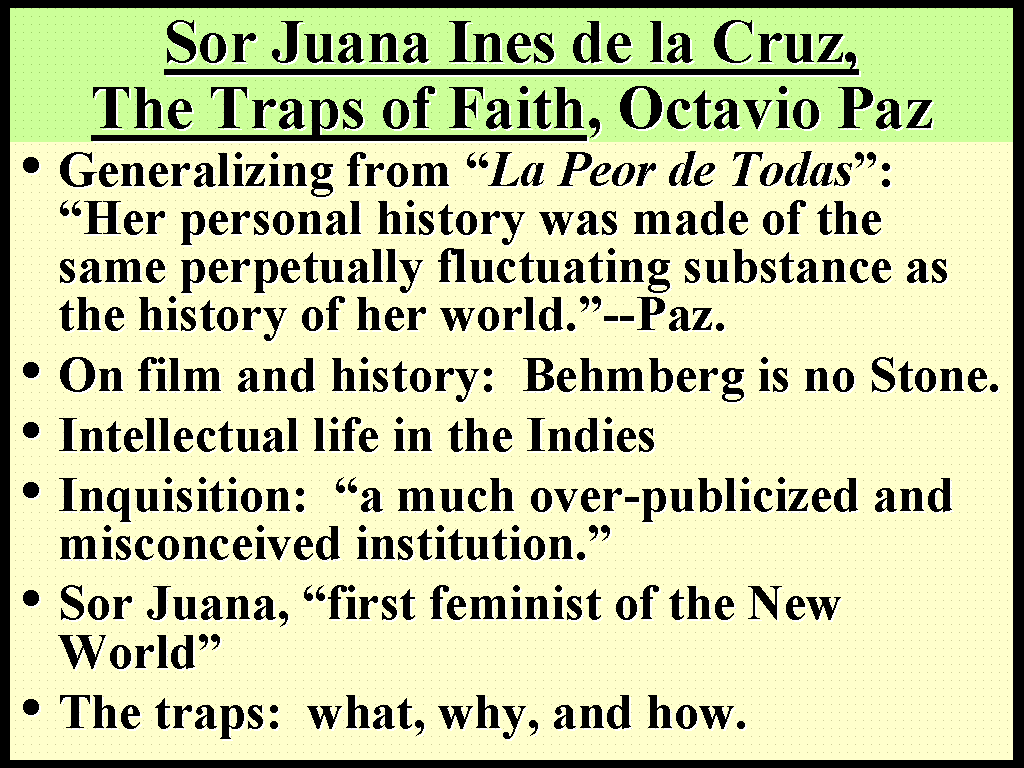
|
Sor Juana Ines de la Cruz, �The Traps of Faith, Octavio Paz
Generalizing from “La Peor de Todas”: “Her personal history was made of the same perpetually fluctuating substance as the history of her world.”--Paz.
On film and history: Behmberg is no Stone.
Intellectual life in the Indies
Inquisition: “a much over-publicized and misconceived institution.”
Sor Juana, “first feminist of the New World”
The traps: what, why, and how.
|
 |
Historical generalization �and Sor Juana Ines de la Cruz
Intellectual life in the Indies
- confined to cities, particularly capitals
- 17th century seasoning: from chronicles to literature, and peninsular to creole
- intellectual expression: exuberant intricacy, formalism, allegory, allusion to authorities
Inquisition: “a much over-publicized and misconceived institution.”
- Books circulated more freely
- Institution was widely supported
- Repression was rare: in 250 years, 30 executions in Lima.
|
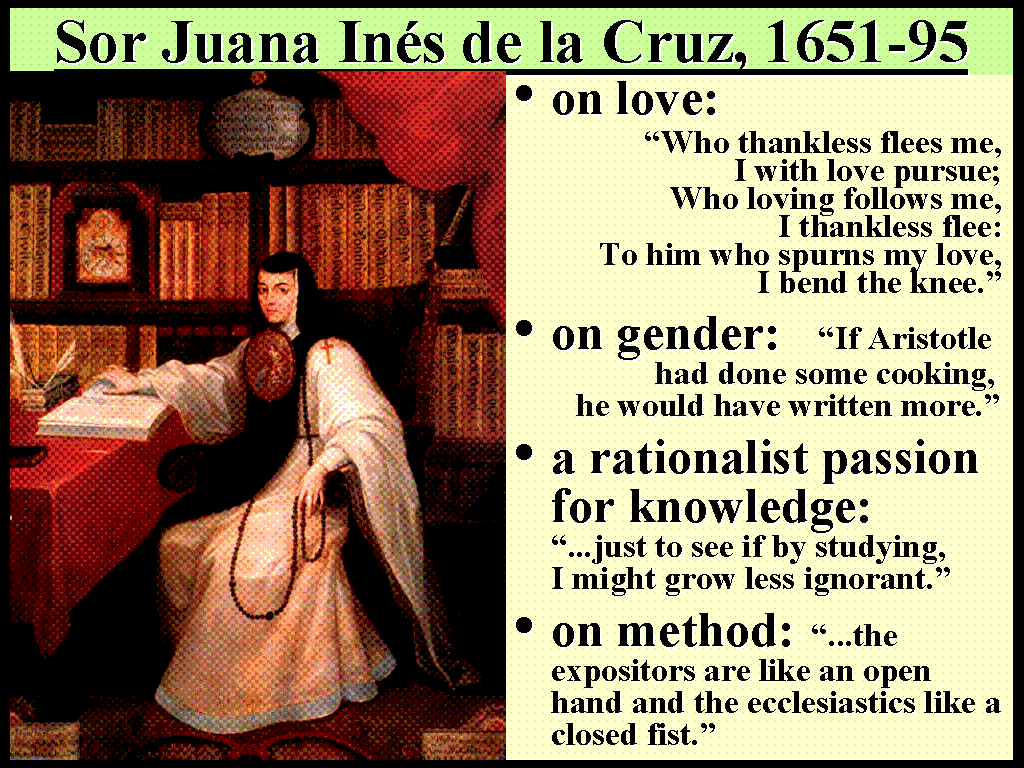 |
Sor Juana Inés de la Cruz, 1651-95
“Who thankless flees me,�I with love pursue;�Who loving follows me, �I thankless flee:�To him who spurns my love, �I bend the knee.”
on gender: “If Aristotle � had done some cooking,� he would have written more.”
a rationalist passion for knowledge: �“...just to see if by studying, �I might grow less ignorant.”
on method: “...the expositors are like an open hand and the ecclesiastics like a closed fist.”
|
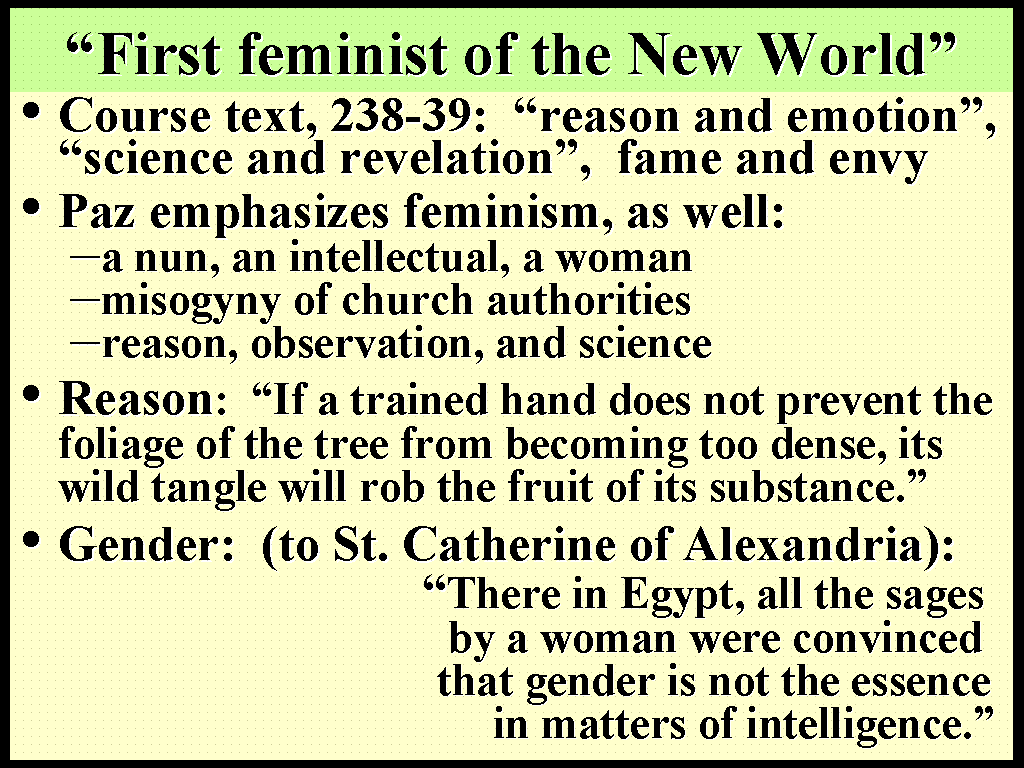 |
“First feminist of the New World”
Course text, 238-39: “reason and emotion”, “science and revelation”, fame and envy
Paz emphasizes feminism, as well:
- a nun, an intellectual, a woman
- misogyny of church authorities
- reason, observation, and science
Reason: “If a trained hand does not prevent the foliage of the tree from becoming too dense, its wild tangle will rob the fruit of its substance.”
Gender: (to St. Catherine of Alexandria):� “There in Egypt, all the sages � by a woman were convinced � that gender is not the essence�
in matters of intelligence.”
|
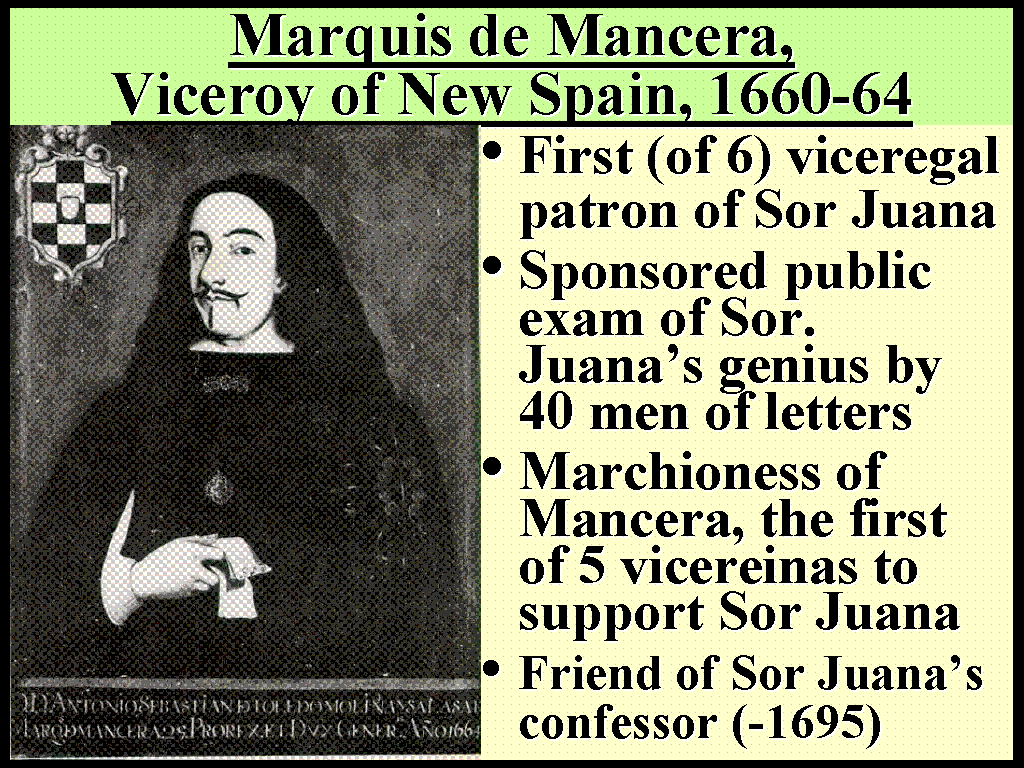 |
Marquis de Mancera, �Viceroy of New Spain, 1660-64
First (of 6) viceregal patron of Sor Juana
Sponsored public exam of Sor. Juana’s genius by 40 men of letters
Marchioness of Mancera, the first of 5 vicereinas to support Sor Juana
Friend of Sor Juana’s confessor (-1695)
|
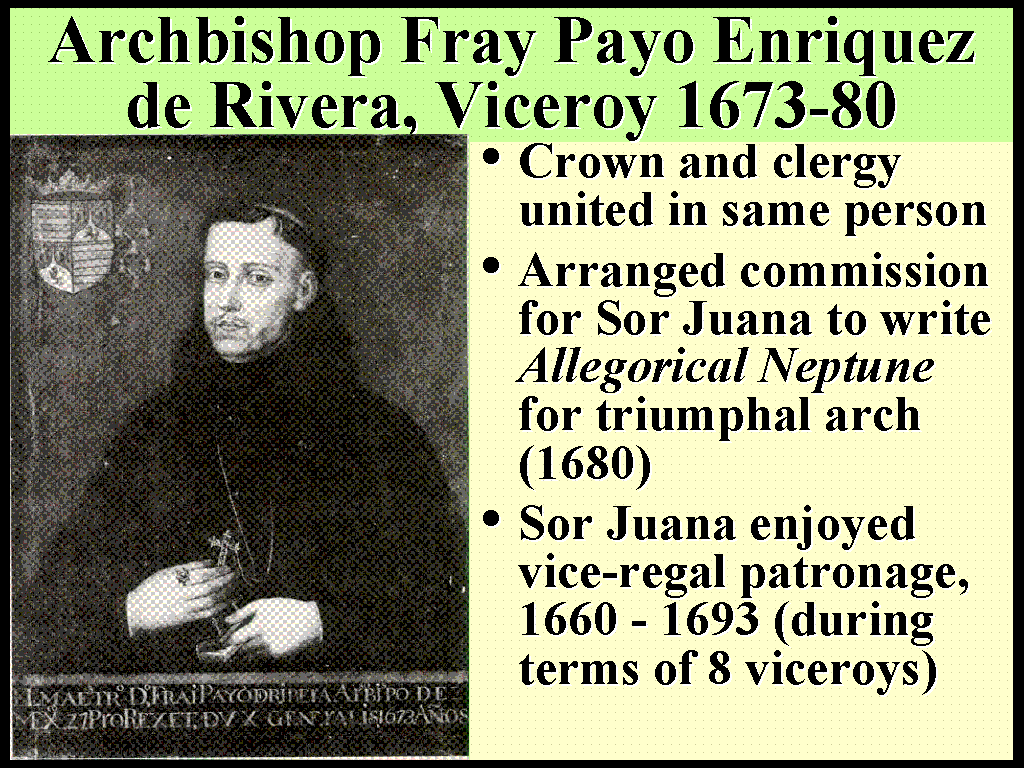 |
Archbishop Fray Payo Enriquez de Rivera, Viceroy 1673-80
Crown and clergy united in same person
Arranged commission for Sor Juana to write Allegorical Neptune for triumphal arch (1680)
Sor Juana enjoyed vice-regal patronage, 1660 - 1693 (during terms of 8 viceroys)
|
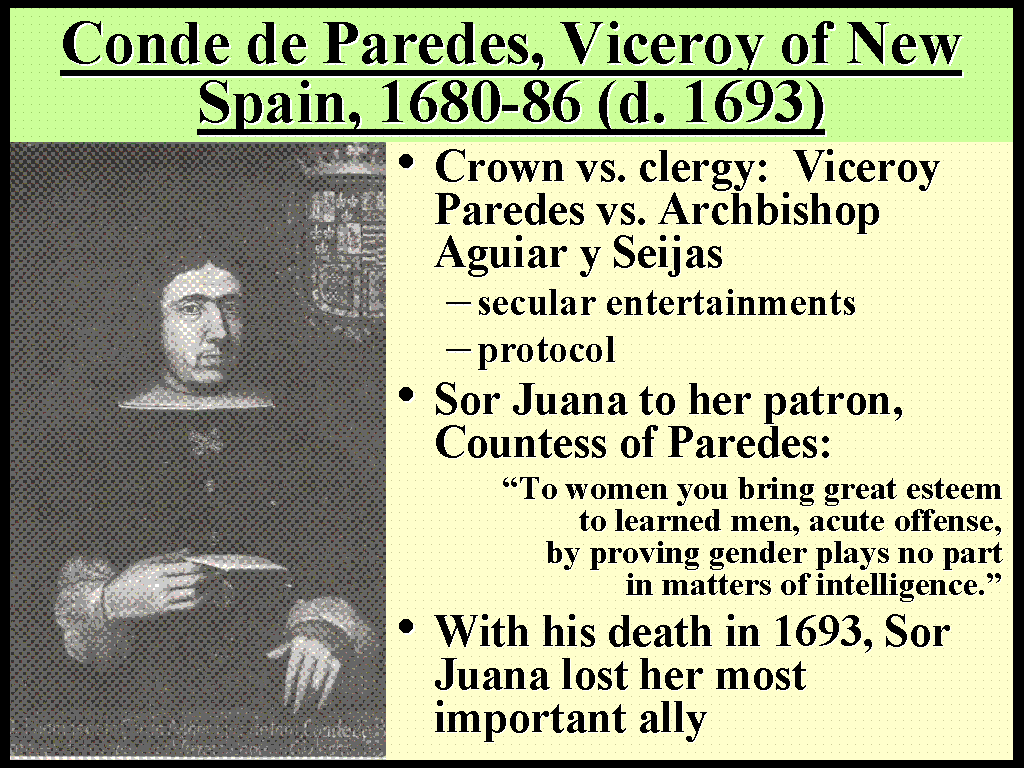 |
Conde de Paredes, Viceroy of New Spain, 1680-86 (d. 1693)
Crown vs. clergy: Viceroy Paredes vs. Archbishop Aguiar y Seijas
- secular entertainments
- protocol
Sor Juana to her patron, Countess of Paredes:
“To women you bring great esteem�to learned men, acute offense,�by proving gender plays no part�in matters of intelligence.”
With his death in 1693, Sor Juana lost her most important ally
|
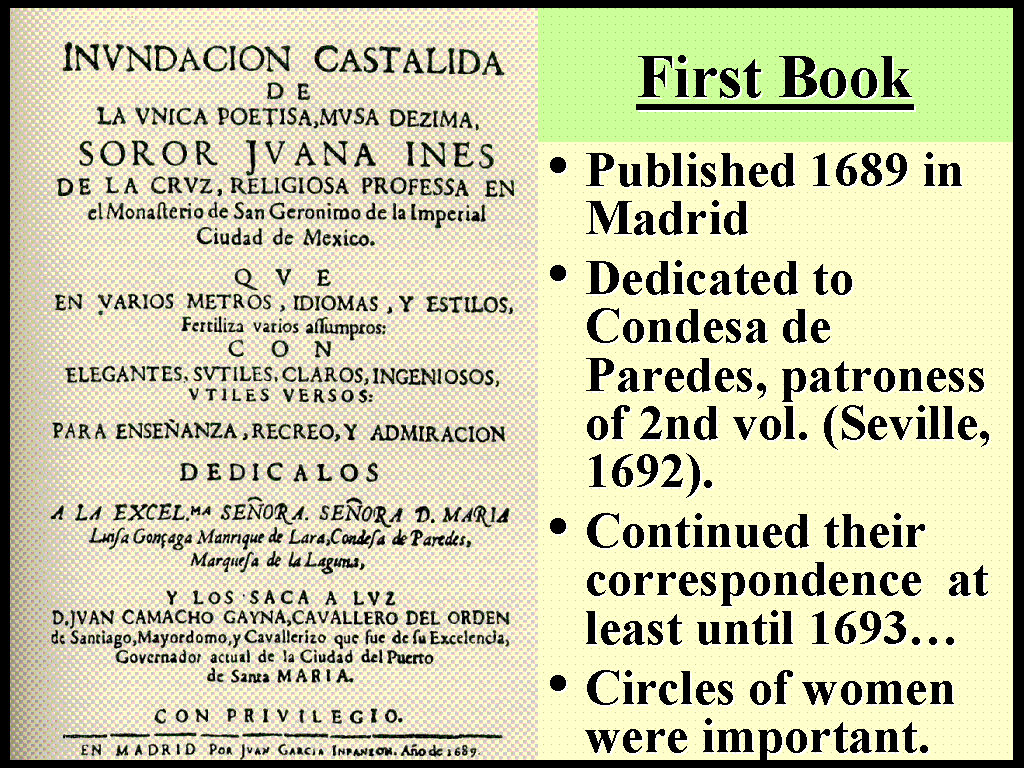 |
First Book
Dedicated to Condesa de Paredes, patroness of 2nd vol. (Seville, 1692).
Continued their correspondence at least until 1693…
Circles of women were important.
|
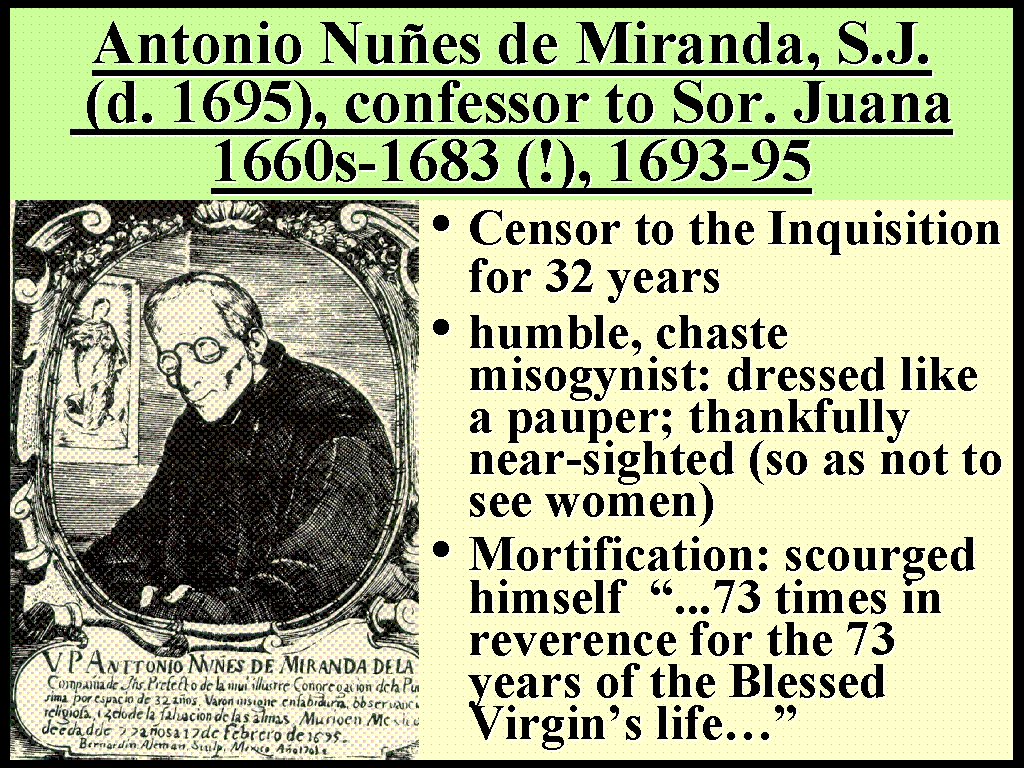 |
Antonio Nuñes de Miranda, S.J. � (d. 1695), confessor to Sor. Juana�1660s-1683 (!), 1693-95
Censor to the Inquisition for 32 years
humble, chaste misogynist: dressed like a pauper; thankfully near-sighted (so as not to see women)
Mortification: scourged himself “...73 times in reverence for the 73 years of the Blessed Virgin’s life…”
|
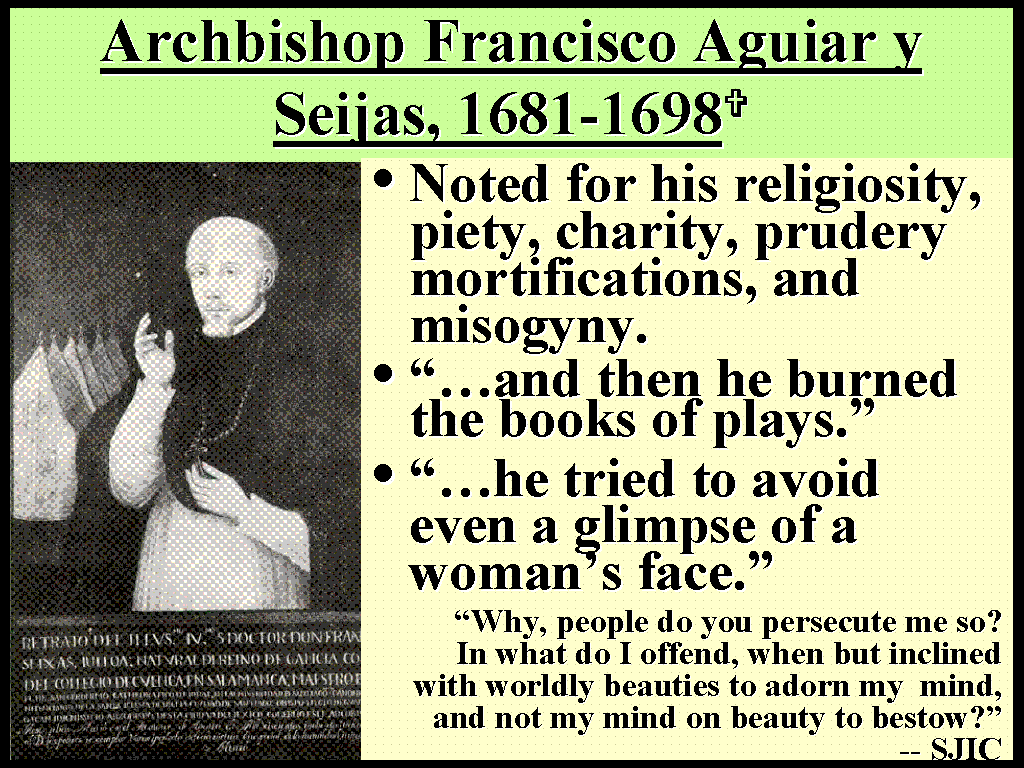 |
Archbishop Francisco Aguiar y Seijas, 1681-1698?
Noted for his religiosity, piety, charity, prudery mortifications, and misogyny.
“…and then he burned the books of plays.”
“…he tried to avoid even a glimpse of a woman’s face.”
“Why, people do you persecute me so?�In what do I offend, when but inclined�with worldly beauties to adorn my mind,�and not my mind on beauty to bestow?”�-- SJIC
|
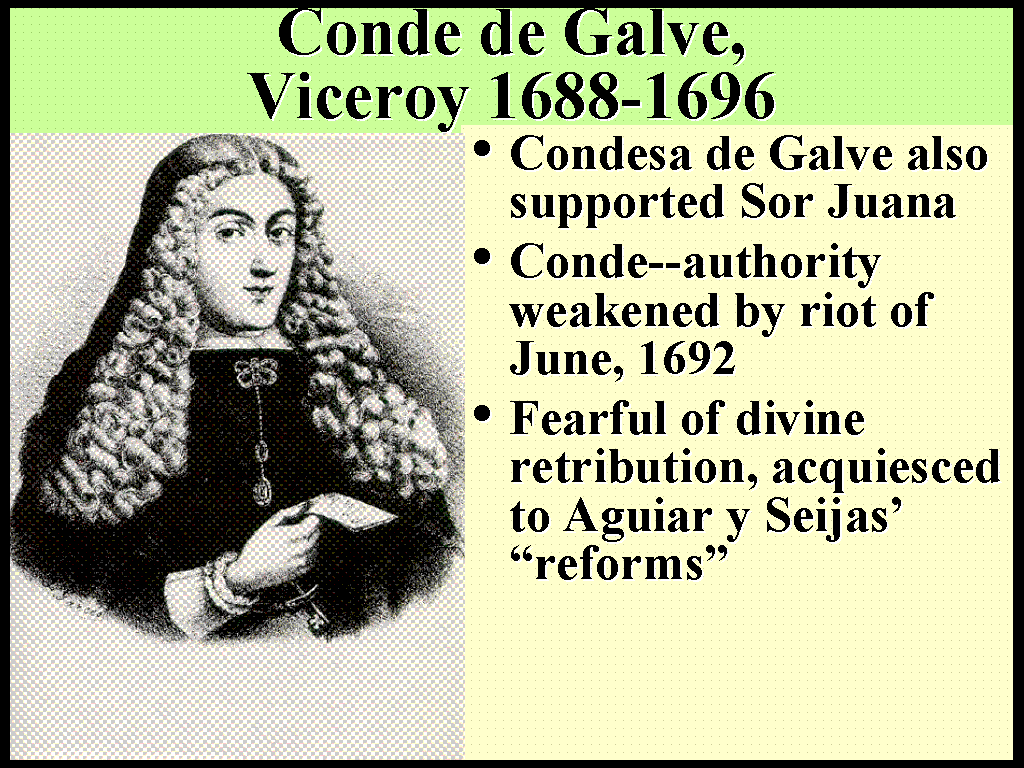 |
Conde de Galve, �Viceroy 1688-1696
Condesa de Galve also supported Sor Juana
Conde--authority weakened by riot of June, 1692
Fearful of divine retribution, acquiesced to Aguiar y Seijas’ “reforms”
|
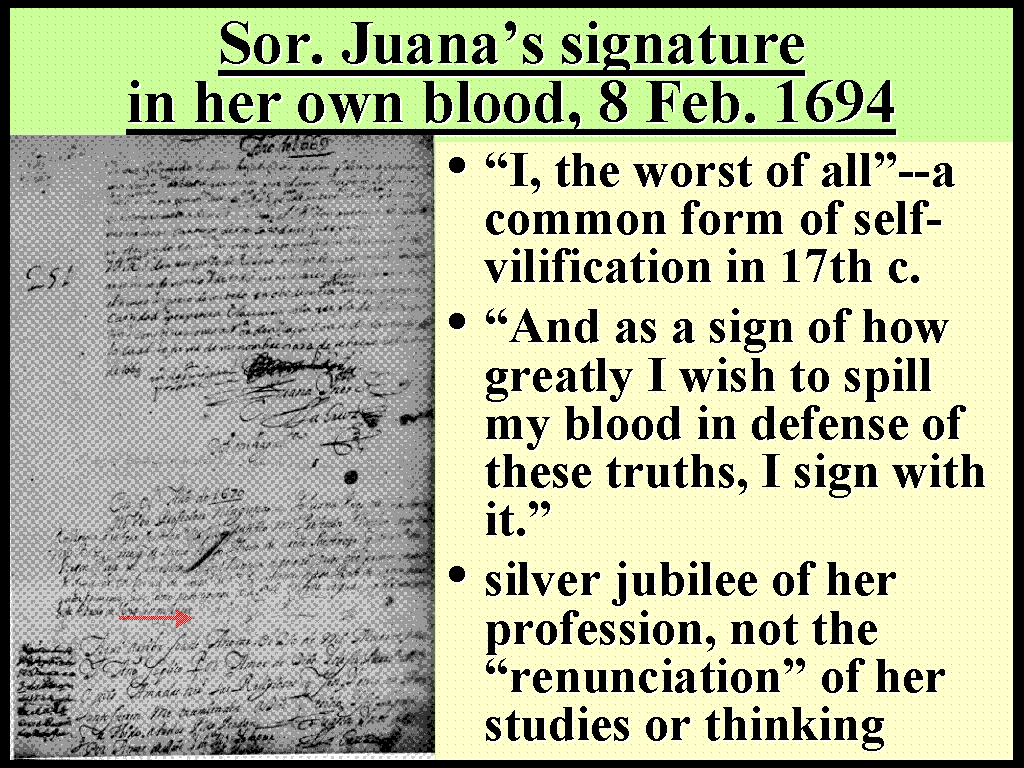 |
Sor. Juana’s signature �in her own blood, 8 Feb. 1694
“I, the worst of all”--a common form of self-vilification in 17th c.
“And as a sign of how greatly I wish to spill my blood in defense of these truths, I sign with it.”
silver jubilee of her profession, not the “renunciation” of her studies or thinking
|
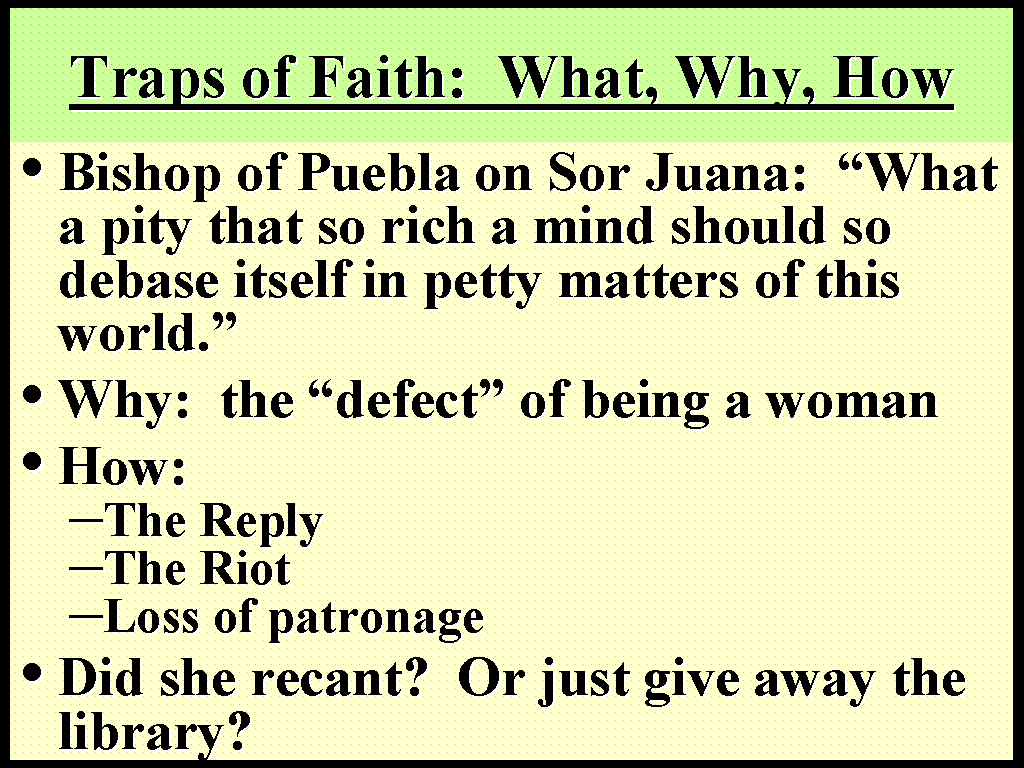 |
Traps of Faith: What, Why, How
Bishop of Puebla on Sor Juana: “What a pity that so rich a mind should so debase itself in petty matters of this world.”
Why: the “defect” of being a woman
How:
- The Reply
- The Riot
- Loss of patronage
Did she recant? Or just give away the library?
|
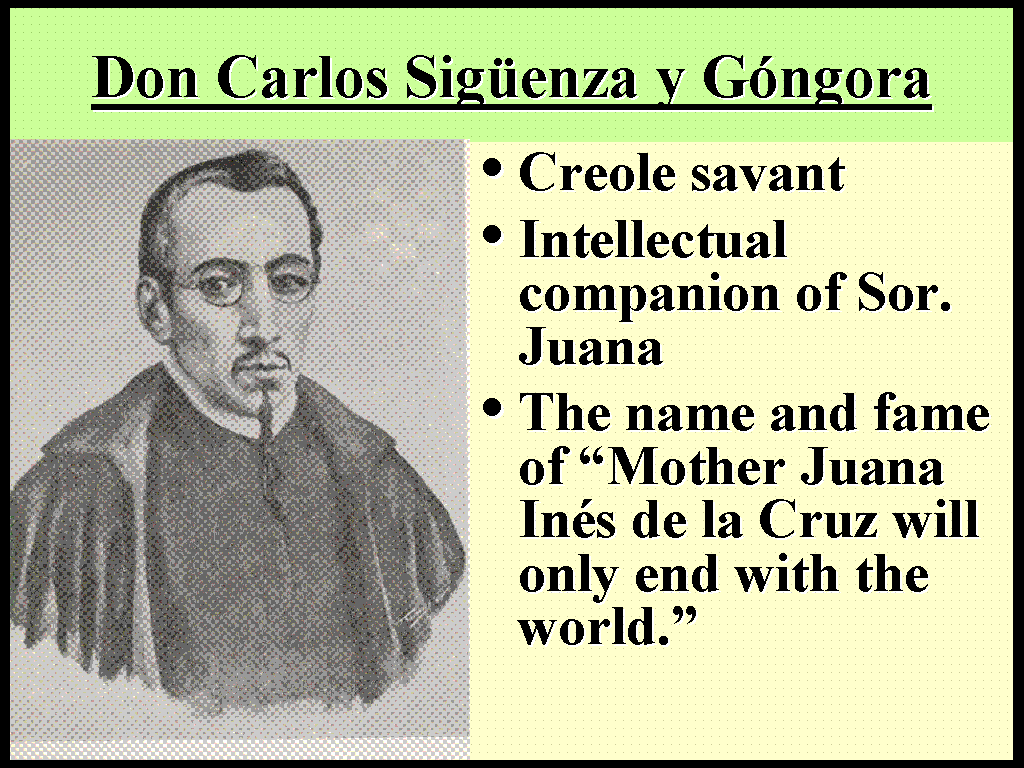 |
Don Carlos Sigüenza y Góngora
Intellectual companion of Sor. Juana
The name and fame of “Mother Juana Inés de la Cruz will only end with the world.”
|
 |
End
|














